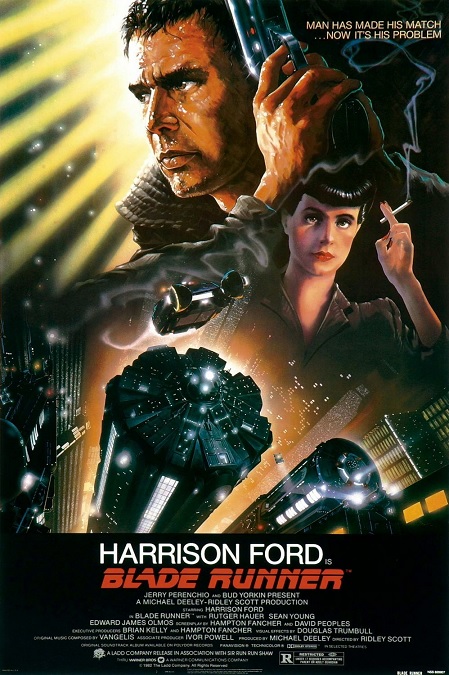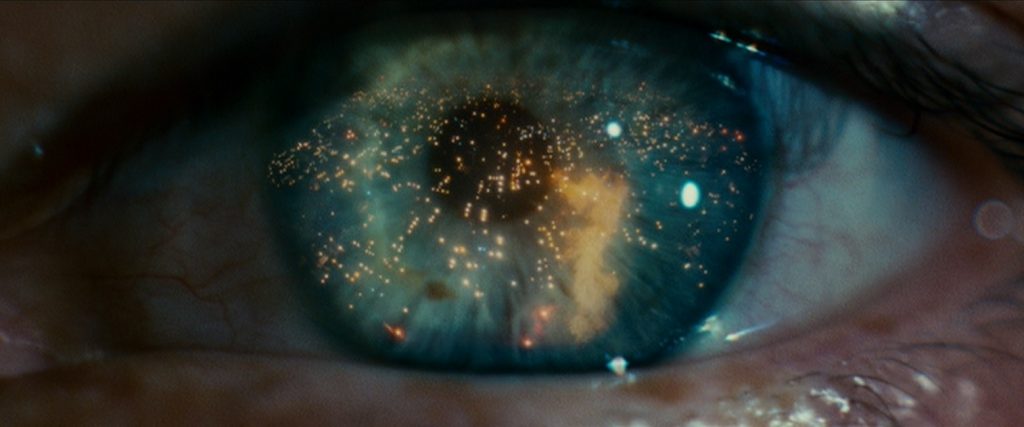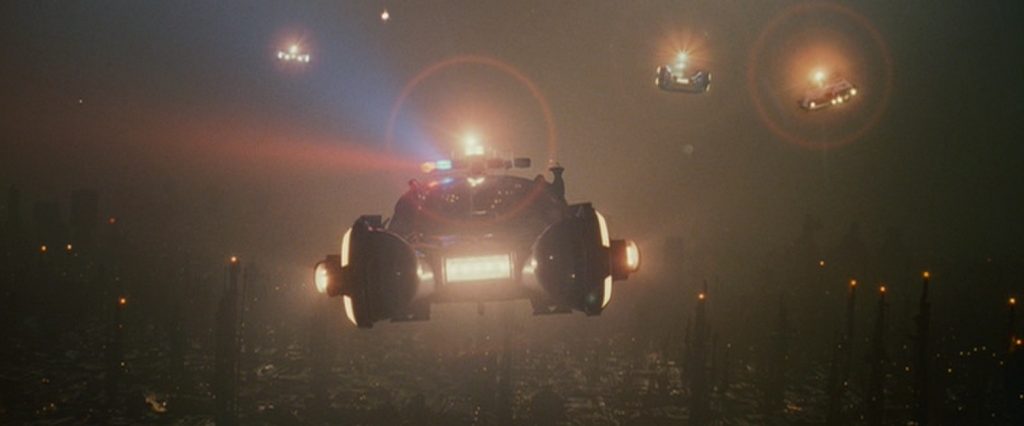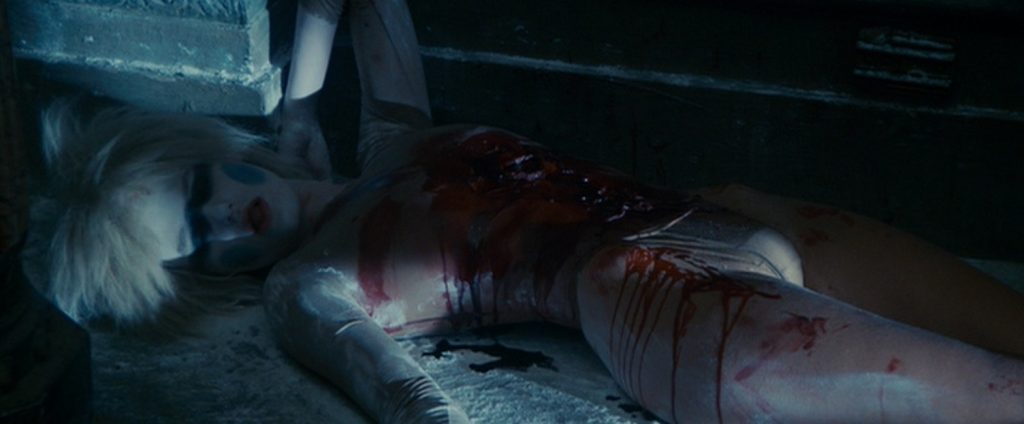



Blade Runner – 1982

This movie had some seamless special effects that were visually fascinating. Their matte paintings, their blue-screening, and detailed scale models were spot-on. The film gave us images that were unique and eye-catching. At times it was pure science-fiction, while at other times it was a film-noir detective story. Though it is significant to note that the film was set in 2019, and I still don’t have my flying car.
Wikipedia didn’t have much to say about the film’s special effects except that, considering they were before the era of purely digital effects, they were practically perfect. Since it was so short, I’ll include it all here. “The film’s special effects are generally recognized to be among the best of all time, using the available non-digital technology to the fullest. In addition to matte paintings and models, the techniques employed included multi-pass exposures. In some scenes, the set was lit, shot, the film rewound, and then rerecorded over with different lighting. In some cases, this was done 16 times in all. The cameras were frequently motion controlled using computers. Many effects used techniques which had been developed during the production of Close Encounters of the Third Kind.”
That last observation made sense. A few of the effects seemed to have a similar look to them. For example, both films used bright colored lights glowing against black backgrounds, which made them stand out in a particular way. Also, the way many of the miniature models were fitted with lights was fantastic, really selling the illusion of reality. And as for the multi-pass exposures, It made everything look dark and misty, but I saw no dark outlines around characters or objects being composited into the paintings. None.
One of the problems, I thought, was a big one. The movie, in general, was way too dark, not in subject manner, but visually. But I know, I get it. It was a choice that was made for both the general aesthetics of the film and the narrative, itself, and it was very effective in creating a mood for the audience. Unfortunately, some of it was actually difficult to see. It was so dimly lit that it was sometimes hard to see what was happening on the screen. And there were many scenes or shots that were back-lit, making the main characters in the foreground incredibly dim.
That being said, I really had no problem with the film’s effects. If I had any problems with the film and its effects, it would be the pacing. Everything was very slow, from the story to the effects. There were only two action sequences in the film. When Decker chases and retires Zhora, she crashes through several plate glass windows… in slow motion. When Decker fights and retires Pris, she violently thrashes about on the floor as he fills her with bullets. But the climax of the movie had very little action. Thus, the effects in the climax were kept to a minimum. Add to that quick scene in which Roy pokes out his creator’s eyes and murders him, and that was about it besides the fantastic sci-fi environments, the cityscapes with the giant video billboards, and flying cars.